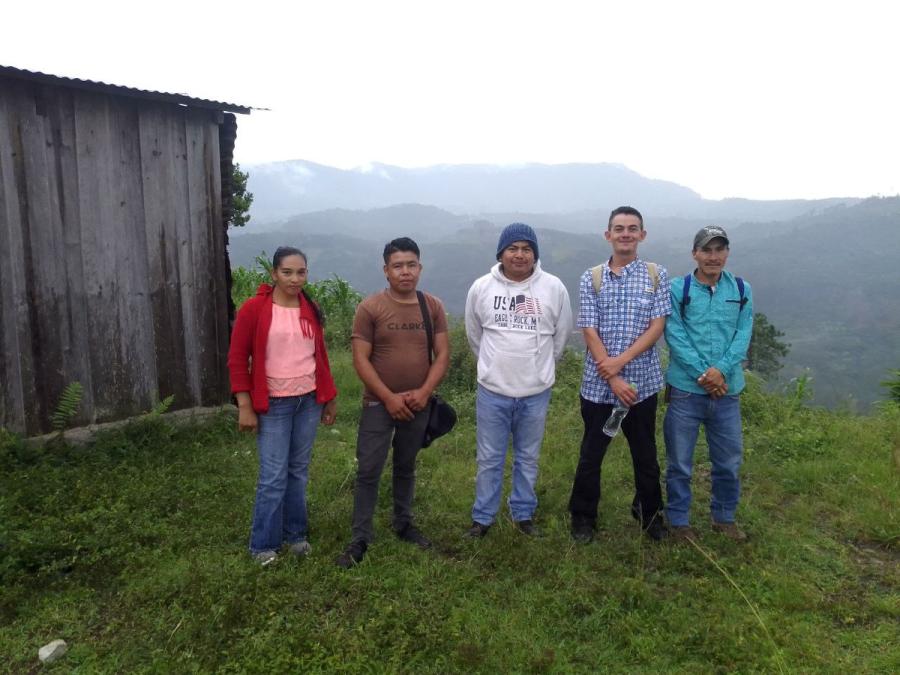The various indigenous peoples of the Honduran Mosquitia, a vast, virtually roadless area that spans the northeastern lowlands of Honduras and into adjacent Nicaragua, have joined forces to monitor environmental damage and attempt to control natural resource exploitation within their traditional lands. Through "CODIMMA", the regional Commission on Development of la Mosquitia and the Environment, Miskito, Tawahka Sumu and Pech Indians will have the ultimate say in the future of their forests and wildlands. The new commission brings renewed hope to an oft-forgotten indigenous voice in a country where federal agencies often make final decisions about the fate of Indian lands without prior consultation with the people themselves.
The new commission has been promoted and supported by two collaborative non-government organizations (NGOs): LightHawk, a U.S.-based conservation organization, and MOPAWI [Mosquitia Pawisa], a Honduran NGO that focuses on community development and resource conservation within la Mosquitia. Through a US Agency for International Development (USAID) grant in support of biodiversity preservation, combined with private U.S. foundation support, LightHawk has been inventorying natural resources within the Honduran Mosquitia, undertaking a preliminary vegetation mapping project, and promoting greater involvement of the region's people in decision-making regarding natural resource utilization and conservation.
Historically, the central government of Honduras has proposed, and in some cases implemented, major resource exploitation project within indigenous lands without consent from the region's people. Furthermore, the war in Nicaragua in the `80s' brought an increased military presence into the Honduran la Mosquitia. Until recently, the communities were not well organized, and were defenseless against powerful economic and military interests. Only three years ago, when Stone Container, a Chicago-based multinational corporation, proposed a "forest management" scheme within la Mosquitia that would have resulted in the extraction of thousands of acres of pine from the region's extensive savannahs for export, the region's people and conservation organizations joined hands to thwart this proposed logging effort. Fortunately, the project was stopped, and meanwhile sent a message to the communities that they must unite to be prepared for similar resource exploitation projects being conceived and planned for their traditional lands.
Today, thanks to the concerted efforts of MOPAWI and MASTA, a coalition of Miskito leaders, in mobilizing the region's indigenous peoples, a series of community-based federaciones have been established in la Mosquitia, each federation made up of 10-20 closely linked communities. The federations together comprise a single confederation of indigenous peoples. With support from LightHawk's la Mosquitia project, this unification and empowering process has been carried several steps further. Not only the community-based federations, but also the majority of indigenous political groups, national development organizations, and representatives of government agencies have formed CODIMMA. This regional commission will serve as a forum for interchange of information and ideas, as a means to monitor activities within the region, and will eventually constitute a decision-making authority for all proposed development schemes within la Mosquitia. The commission provides the means for the original inhabitants of la Mosquitia to be pro-active in determining the fate of their traditional lands and resources.
During its first three meetings (August, September & October, 1994), CODIMMA established a broad and inclusive membership, created a Board of Directors, and outlined its objectives. The primary focus of the commission is appropriate and sustainable development of the region and its natural resources, with a strong emphasis on resources conservation. LightHawk has been asked to help provide basic ecological and information on the region's diverse and unexplored forests, wetlands and coasted ecosystems for better management of these still intact and biologically rich environments, and their abundant wildlife inhabitants.
A primary objective of CODIMM is to undertake a comprehensive land tenure study, mapping effort and land legalization project for the region's indigenous communities. The communities are threatened by an ever-expanding colonization front of ladino peasants, or campesinos, encroaching from the west and south into the borders of indigenous lands The rapidly growing campensino population constitutes the most potent and destructive invasion of indigenous groups (e.g. Comite para Vifilancia de la Tierra, CVT), the forestry agency (COHDEFOR), Peace Corps volunteers and Vecinos Mundiales have joined forces to monitor and focus international attention on the cancerous invasion of colonists into indigenous lands of la Mosquitia. LightHwak will engage its new "multi-spectral mapping system," a valuable technological tool comprised of an array of digital video cameras and onboard computer mounted into its own aircraft, to produce a preliminary map of the extent of the colonization front.
LightHawk has envisioned extending the scope of regional input into resource decision making to an international level, by bringing CODIMMA and its Miskito counterparts from Nicaragua together to discuss binational issues of mutual concern. LightHawk sponsored the first exchange of Miskito resource managers between the delegation from the Honduran Mosquitia visited Puerto Cabezas on the Atlantic Coast of Nicaragua to discuss natural resource planning with a regional conservation commission for the Miskito Cays Biological Reserve, an extensive protected area that includes portions of the northeast coast and the Miskito Cays Further binational exchanges targeting conservation issues within the whole of la Mosquitia are planned under LightHawk's expanded program in the region.
Article copyright Cultural Survival, Inc.

